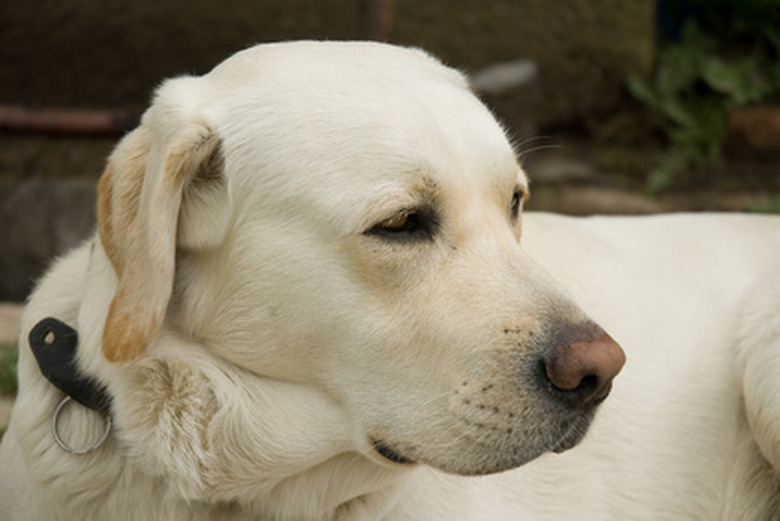How To Give A Dog An Enema
Warning
While some people recommend giving a dog an enema in the bathtub, It is better to do it outside in the yard where the clean up is easier. Many dogs hate the sight of a bathtub and become resistant, thinking you are going to bathe them.
Tip
It is possible to use an old fashioned enema bag and sudsy water, but to do so would probably require two people to give an enema to a large dog. One person can easily administer a commercially prepared enema to large breeds.
There are signs when your dog may need an enema. If he dog seems listless and is straining and unable to pass a stool. When he drags his bottom across the grass. She might even cry in pain because she has eaten something she cannot pass, such as a chicken bone (which should never be fed to dogs). If you decide your dog does need an enema, there are important considerations and tools you'll need to perform this task in an efficient and hygienic manner.
Step 1
Take your dog to a quiet place in your yard. Talk to him gently to gain his confidence. Pat him affectionately to let him know you care about him.
Step 2
Show the enema to the dog and let him sniff it. Grease the tip of the part that you will insert into his rectum with a bit of mineral oil so it will slide into the dog easily.
Step 3
Pet the dog gently while lifting his tail to examine his anus. Talk to him to calm his fears.
Step 4
Gently slide the tip of the enema syringe into his rectum while holding him in your left arm to make him feel secure. Your dog should be accustomed to having you take care of him and should offer you no resistance.
Step 5
Hold the enema in place in the dog's rectum and gently squeeze the contents of the enema into the dog's rectum.
Step 6
Hold the enema in the dog a few seconds. If necessary you can massage his tummy and put some pressure on it.
Step 7
Remove the enema bottle from the dog. Watch him closely. He should defecate within five minutes.
Always check with your veterinarian before changing your pet's diet, medication, or physical activity routines. This information is not a substitute for a vet's opinion.

